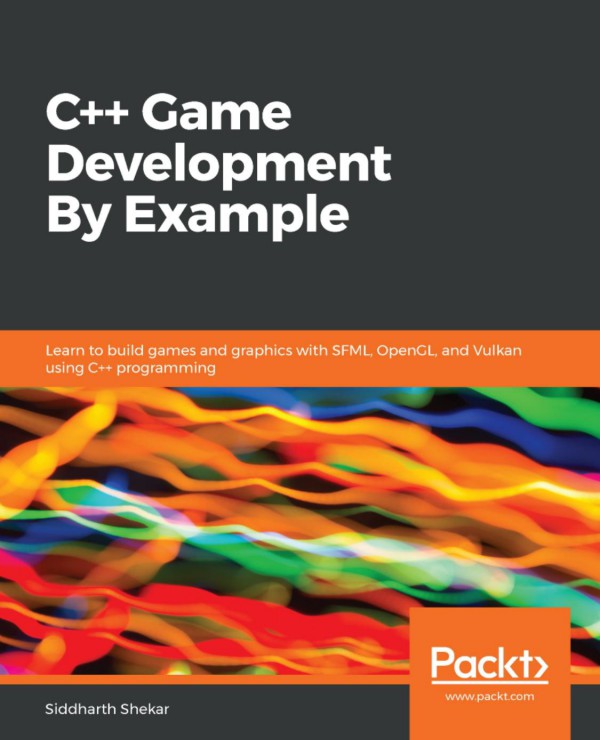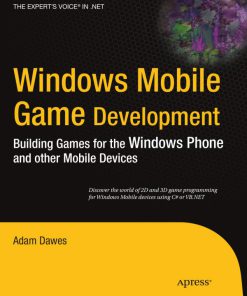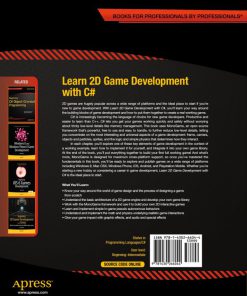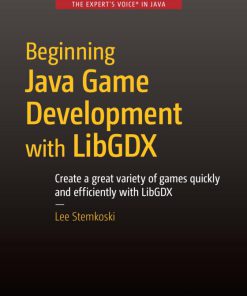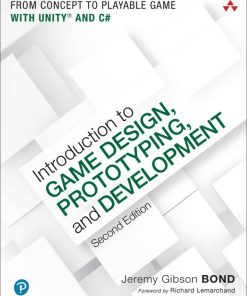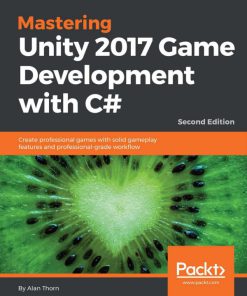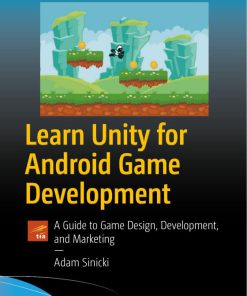(Ebook PDF) C Game Development By Example 1st edition by Siddharth Shekar 1789537347 9781789537345 full chapters
$50.00 Original price was: $50.00.$25.00Current price is: $25.00.
Authors:Siddharth Shekar , Series:Gaming [53] , Author sort:Shekar, Siddharth , Languages:Languages:eng , Published:Published:Oct 2019 , Publisher:Packt Publishing
C++ Game Development By Example 1st edition by Siddharth Shekar – Ebook PDF Instant Download/DeliveryISBN: 1789537347, 9781789537345
Full download C++ Game Development By Example 1st edition after payment.
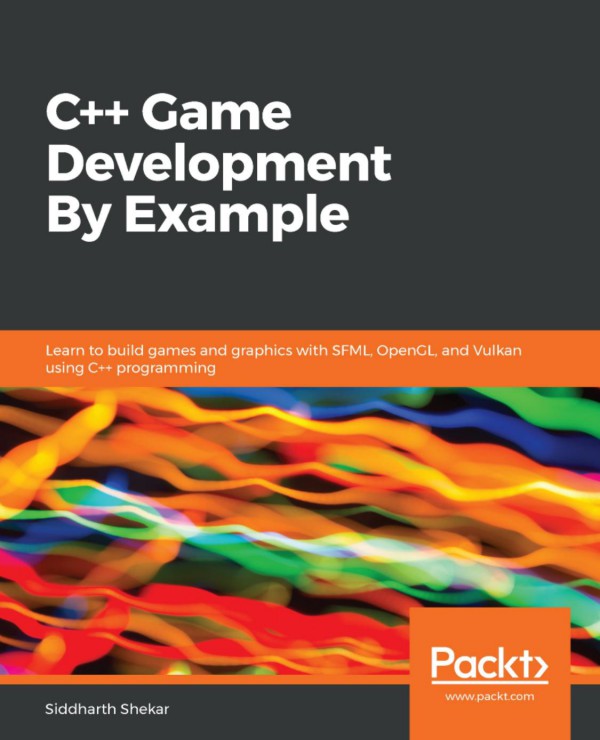
Product details:
ISBN-10 : 1789537347
ISBN-13 : 9781789537345
Author : Siddharth Shekar
Explore modern game programming and rendering techniques to build games using C programming language and its popular libraries Key Features Learn how you can build basic 2D and complex 3D games with C Understand shadows, texturing, lighting, and rendering in 3D game development using OpenGL Uncover modern graphics programming techniques and GPU compute methods using the Vulkan API Book Description Although numerous languages are currently being used to develop games, C remains the standard for fabricating expert libraries and tool chains for game development. This book introduces you to the world of game development with C . C Game Development By Example starts by touching upon the basic concepts of math, programming, and computer graphics and creating a simple side-scrolling action 2D game. You’ll build a solid foundation by studying basic game concepts such as creating game loops, rendering 2D game scenes using SFML, 2D sprite creation and animation, and collision detection. The book will help you advance to creating a 3D physics puzzle game using modern OpenGL and the Bullet physics engine.
C++ Game Development By Example 1st Table of contents:
- Section 1: Basic Concepts
- C++ Concepts
- Program basics
- Variables
- Strings
- Operators
- Statements
- Iteration
- Jump statements
- Switch statement
- Functions
- Scope of variables
- Arrays
- Pointers
- Structs
- Enums
- Classes
- Inheritance
- Summary
- Mathematics and Graphics Concepts
- 3D coordinate systems
- Points
- Vectors
- Vector operations
- Vector magnitude
- Unit vectors
- The dot product
- The cross product
- Matrices
- Matrix addition and subtraction
- Matrix multiplication
- Identity matrix
- Matrix transpose
- Matrix inverse
- GLM OpenGL mathematics
- OpenGL data types
- Space transformations
- Local/object space
- World space
- View space
- Projection space
- Screen space
- Render pipeline
- Vertex specification
- Vertex shader
- Vertex post-processing
- Primitive assembly
- Rasterization
- Fragment shader
- Per-sample operation
- Framebuffer
- Summary
- Section 2: SFML 2D Game Development
- Setting Up Your Game
- An overview of SFML
- Downloading SFML and configuring Visual Studio
- Creating a window
- Drawing shapes
- Adding sprites
- Keyboard input
- Handing player movement
- Summary
- Creating Your Game
- Starting afresh
- Creating the Hero class
- Creating the Enemy class
- Adding enemies
- Creating the Rocket class
- Adding rockets
- Collision detection
- Summary
- Finalizing Your Game
- Finishing the Gameloop and adding scoring
- Adding text
- Adding audio
- Adding player animations
- Summary
- Section 3: Modern OpenGL 3D Game Development
- Getting Started with OpenGL
- What is OpenGL?
- Creating our first OpenGL project
- Creating a window and ClearScreen
- Creating a Mesh class
- Creating a Camera class
- The ShaderLoader class
- The Light Renderer class
- Drawing the object
- Summary
- Building on the Game Objects
- Creating the MeshRenderer class
- Creating the TextureLoader class
- Adding Bullet Physics
- Adding rigid bodies
- Summary
- Enhancing Your Game with Collision, Loops, and Lighting
- Adding a RigidBody name
- Adding an enemy
- Moving the enemy
- Checking collision
- Adding keyboard controls
- Game loop and scoring
- Text rendering
- Adding lighting
- Summary
- Section 4: Rendering 3D Objects with Vulkan
- Getting Started with Vulkan
- About Vulkan
- Configuring Visual Studio
- Vulkan validation layers and extensions
- Vulkan instances
- The Vulkan Context class
- Creating the window surface
- Picking a physical device and creating a logical device
- Summary
- Preparing the Clear Screen
- Creating SwapChain
- Creating Renderpass
- Using render targets and framebuffers
- Creating CommandBuffer
- Beginning and ending Renderpass
- Creating the clear screen
- Summary
- Creating Object Resources
- Updating the Mesh class for Vulkan
- Creating the ObjectBuffers class
- Creating the Descriptor class
- Creating the SPIR-V shader binary
- Summary
- Drawing Vulkan Objects
- Preparing the GraphicsPipeline class
- ShaderStageCreateInfo
- VertexInputStateCreateInfo
- InputAssemblyStateCreateInfo
- RasterizationStateCreateInfo
- MultisampleStateCreateInfo
- Depth and stencil create info
- ColorBlendStateCreateInfo
- Dynamic state info
- ViewportStateCreateInfo
- GraphicsPipelineCreateInfo
- The ObjectRenderer class
- Changes to the VulkanContext class
People also search for C++ Game Development By Example 1st:
is c++ good for game development
c++ game development for beginners
c++ game development guide
c++ game development tutorial
c++ game development book

